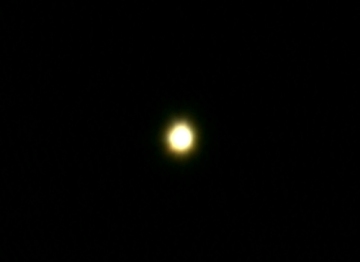
Pollux (also cataloged as Beta Geminorum), is an orange
giant K star approximately 34 light-years away in the constellation of
Gemini (the Twins). Pollux is the brightest star in the constellation
(brighter than Castor (Alpha Geminorum). It makes an interesting color
contrast with its white "twin," Castor.
In Star Trek, Pollux IV is the fourth planet in the
Pollux system. It was a Class M world with an oxygen-nitrogen
atmosphere, and an approximate age of four billion years. Considered
quite ordinary, there was no contact prior to the USS Enterprise's
visit there in 2267. The Enterprise visited the Pollux system on a
routine survey mission that year, where it encountered a being who
claimed to be the Greek god Apollo. (TOS: "Who Mourns for Adonais?")
A view of the surface of Pollux IV was depicted on
several viewscreens on Deep Space 9's Promenade and Replimat, (DS9:
"The Muse") advertising a visit to the "amazing ruins of Pollux IV".
(DS9: "What You Leave Behind")
In reality, evidence has been found for a a hot, outer,
magnetically supported corona around Pollux, and the star is known to
be an X-ray emitter. As of 2006, Pollux was confirmed to have an
extrasolar planet orbiting it. On Jun. 16, 2006, a team of astronomers
confirmed the presence of a Jupiter-class planet around Pollux. Pollux
b had been first detected in 1993. Assuming a mass for Pollux of 1.7
solar masses, Pollux b has a minimum mass of 2.3 +/- 0.45
Jupiter-masses. It moves around Pollux at an average distance of 1.64
+/- 0.27 AU in a nearly circular orbit (eccentricity = 0.02 +/- 0.03)
with a period of 1.6 years (589.64 +/- 0.81 days).
|
